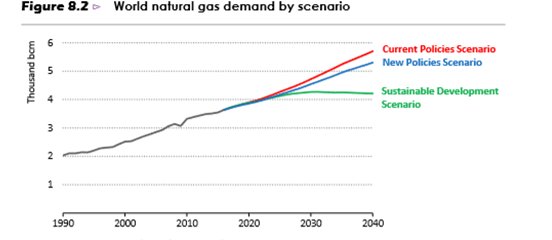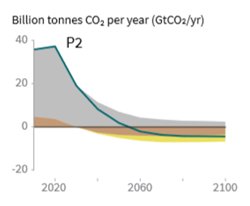1/ What role for natural gas in a 1.5⁰C world?
Some reflections from the new #IPCC #SR15 report:
(thread)
Some reflections from the new #IPCC #SR15 report:
(thread)

2/ A reminder: natural gas currently accounts for 20% of global energy emissions and is the world’s fastest growing fossil fuel. In the IEA’s current policies scenario, gas demand could increase by ~50% by 2040.
How far is this from a 1.5⁰C pathway?
How far is this from a 1.5⁰C pathway?

3/ With coal, the IPCC message is simple: stop burning it. The IPCC pathways show a reduction in coal in primary energy use of 59-78% by 2030, compared to 2010. By 2050 it falls 73-97%.
5/ The first pathway avoids overshooting the 1.5⁰C limit, and avoids relying on bio-energy carbon capture and storage (BECCS).
In this pathway gas use falls by 25% by 2030 and 74% by 2050, as clean energy and energy efficiency come to the fore.
In this pathway gas use falls by 25% by 2030 and 74% by 2050, as clean energy and energy efficiency come to the fore.

6/ The second pathway includes some BECCS, which creates room for a slower decline in industry and energy emissions.
Global gas use falls but more slowly: 20% by 2030, 53% by 2050.
Global gas use falls but more slowly: 20% by 2030, 53% by 2050.

7/ The third pathway “follows historical patterns”. More energy is used; fewer renewables deployed. Way more BECCS are needed to stay under 1.5⁰C (requiring a land area larger than the UK for bioenergy crops).
Natural gas use rises: up 33% by 2030, falling back to 21% by 2050.
Natural gas use rises: up 33% by 2030, falling back to 21% by 2050.

8/ In the final pathway, temperatures overshoot 1.5⁰C and huge amounts of BECCS are needed to bring it back (requiring land area 2x India).
Gas use rises 37% by 2030, but then plummets to -48% by 2050, as bioenergy CCS replaces natural gas in the energy mix.
Gas use rises 37% by 2030, but then plummets to -48% by 2050, as bioenergy CCS replaces natural gas in the energy mix.

9/ Conclusions?
The IEA ‘current policies’ projections shows growth for natural gas that goes way beyond any of the main IPCC 1.5⁰C pathways. Current trends are not sustainable.
The IEA ‘current policies’ projections shows growth for natural gas that goes way beyond any of the main IPCC 1.5⁰C pathways. Current trends are not sustainable.
10/ Most IPCC 1.5⁰C pathways show a sharp decline in gas use.
The exception is a 'goldilocks' scenario with enough BECCS to make atmospheric space for a small increase in gas, but not enough BECCS to displace gas from the energy system.
The exception is a 'goldilocks' scenario with enough BECCS to make atmospheric space for a small increase in gas, but not enough BECCS to displace gas from the energy system.
11/ POSTSCRIPT
The IPCC report shows 1.5⁰C pathways getting to net zero CO2 emissions by around 2050. The 2⁰C pathways also go to net zero, by 2075.
The same challenges for gas apply in a 2⁰C world, only over somewhat slower timescales.
The IPCC report shows 1.5⁰C pathways getting to net zero CO2 emissions by around 2050. The 2⁰C pathways also go to net zero, by 2075.
The same challenges for gas apply in a 2⁰C world, only over somewhat slower timescales.

• • •
Missing some Tweet in this thread? You can try to
force a refresh





